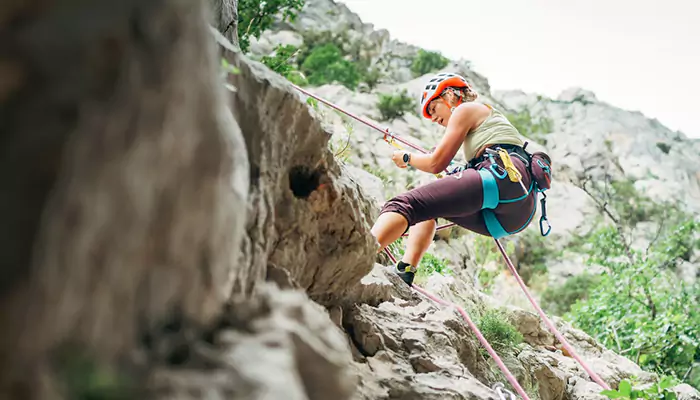
Climbing, an exhilarating blend of physical challenge and mental stamina, offers a unique way to explore both the great indoors and the rugged outdoors.
Whether clinging to a craggy cliff or scaling an indoor wall, climbing is a sport that promises a full-body workout and a thrilling adventure. But, for beginners, the world of climbing might seem as daunting as a sheer rock face. Fear not! This guide will walk you through the essentials of indoor and outdoor climbing, ensuring your journey is both safe and enjoyable.
A Safe Bet for Beginners
Indoor climbing gyms are the perfect starting point for new climbers. They provide a controlled environment where you can learn the ropes – quite literally! without the unpredictability of outdoor elements. Most gyms offer rental gear, including shoes and harnesses, and have staff on hand to guide you through your first climbs. The marked routes, known as "problems" in bouldering or "routes" in rope climbing, vary in difficulty, allowing you to progress at your own pace.
Outdoor Climbing
Venturing outdoors is a different ball game. It requires more preparation and respect for nature's unpredictability. When planning an outdoor climb, start by deciding the duration, intensity, and type of climb you're interested in. Research online, join local climbing forums, or consult staff at indoor gyms for route recommendations suited to your skill level.
Weather Watch
Weather plays a significant role in outdoor climbing. While some seasoned climbers find joy in a drizzle, beginners should opt for dry, mild conditions. Check the forecast and be prepared to adjust your plans. Remember, safety always comes first.
Physical Preparation
Climbing is physically demanding, but you don't need to be an athlete to start. Focus on building your endurance, flexibility, and strength gradually. Incorporate stretching and warm-up exercises specific to climbing to prepare your body for the climb.
Safety First
Whether indoors or out, safety is paramount. Never climb alone, especially as a beginner. In an indoor setting, follow the gym's safety guidelines and use a buddy system. For outdoor adventures, consider hiring a guide, especially for unfamiliar routes. Regularly check your gear for wear and tear, and always perform safety checks on your harness, knots, and carabiners.
Gear Up

Climbing requires specific gear, and choosing the right equipment is crucial for both safety and comfort. For clothing, opt for flexible, durable fabrics and avoid overly baggy clothes that could interfere with your harness or gear. Climbing shoes come in three main types – neutral for beginners, moderate for more technical climbs, and aggressive for advanced routes. Remember, comfort is key.
A high-quality helmet is a must, even for indoor climbs. Your harness should fit snugly, and carabiners – essential for connecting your rope and gear – come in various shapes and types. Choose what best suits your climb. Climbing ropes are categorized as static or dynamic; the former is used for anchoring and rappelling, while the latter is preferable for climbs where you might fall.
Chalk is another essential, helping to keep your hands dry and improve grip. And never underestimate the importance of a well-stocked first aid kit, especially for outdoor excursions.
The Climbing Journey – Start Slow, Aim High
Climbing is more than just a physical sport; it's a mental challenge and a way to connect with nature and like-minded enthusiasts. As you start, set realistic goals. Begin with easier climbs and progressively challenge yourself with more difficult routes. Climbing offers a unique sense of accomplishment and a literal view from the top.
Climbing, an engaging sport with myriad benefits for body and mind, can be an incredibly rewarding experience. It's a fantastic way to build confidence, increase strength, and enjoy a great time. Whether you're drawn to the controlled environment of an indoor gym or the wild beauty of outdoor climbs, remember to prioritize research, preparation, and safety.












